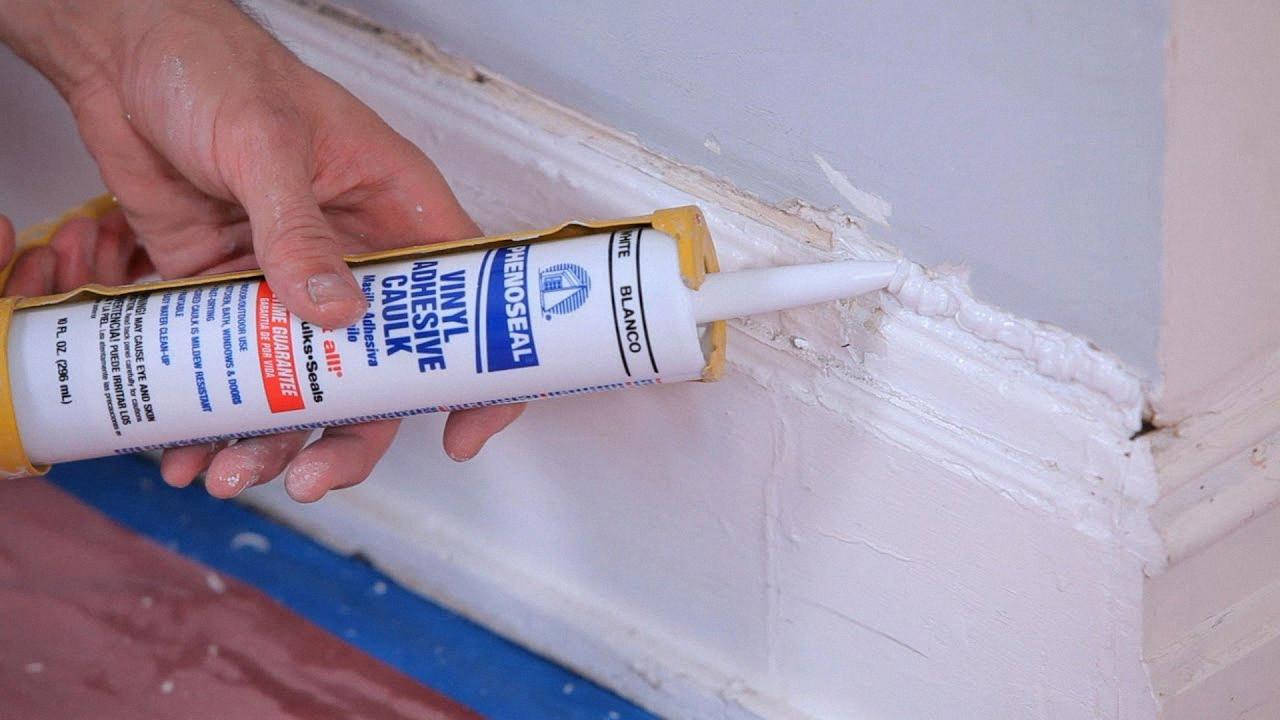Caulk is a versatile adhesive that is used to fill gaps and cracks around windows, doors, and othr fixtures. It is a vital component of any home renovation or repair project. One of the most common questions that homeowners ask is whether they should caulk before or after painting. This article will explore the different aspects of caulking and provide you with a comprehensive guide on when to caulk.
The first thing you need to consider is the type of caulk you are using. There are many types of caulk available on the market, each with its unique properties. Some caulk is designed to be painted over, while others are not. Acrylic and silicone are the types of caulk that are commonly used for outdoor trim, siding, and windows because they are waterproof and flexible. These types of caulk can be painted over after they have dried and cured.
Before you start caulking, you need to prepare the surface. Make sure that the surface is clean and dry, free from any dust, dirt, or debris. If the surface is not clean, the caulk will not adhere properly, and it will not provide the required seal. You can use a wire brush or sandpaper to remove any loose paint or rust.
Once the surface is clean and dry, you can start caulking. Apply the caulk in a steady and continuous bead along the gap or crack. Use a caulking gun to apply the caulk evenly. Smooth the caulk with a caulk smoothing tool or your finger. Make sure that the caulk fills the gap or crack completely. Wipe off any excess caulk with a damp rag.
After you have applied the caulk, you need to let it dry and cure. The drying time will depend on the type of caulk you are using. Acrylic caulk dries quickly, usually within 30 minutes to an hour. However, it takes around 24 hours to cure completely. Silicone caulk, on the other hand, takes longer to dry and cure. It can take up to 48 hours to dry and cure completely.
Once the caulk has dried and cured, you can paint over it. However, you need to make sure that the caulk has cured completely before you start painting. Painting over uncured caulk can cause it to crack or peel. It is best to wait at least 24 hours before painting over acrylic caulk and 48 hours before painting over silicone caulk.
Caulking is an essential part of any home renovation or repair project. Whether you should caulk before or after painting depends on the type of caulk you are using. Acrylic and silicone caulk can be painted over after they have dried and cured. It is essential to prepare the surface properly, apply the caulk evenly, and let it dry and cure before painting over it. By following these simple steps, you can ensure that your caulking project is a success.
Should You Paint Over Caulking?
You can paint over caulking. However, it is important to ensure that the caulking is completely dry before painting over it. Painting over uncured caulk can cause the caulk to crack and peel, which can compromise the effectiveness of the caulk. It is recommended to wait at least 24 hours before painting over caulk. Additionally, it is important to choose a paint that is compatible with the type of caulk used. Some paints may not adhere properly to certin types of caulks, which can also result in cracking and peeling. Ultimately, allowing the caulking to dry completely before painting over it and choosing a compatible paint will help ensure a long-lasting and effective seal.

Can You Caulk And Paint The Same Day?
It is generally recommended to allow caulk to dry for at least three hours before painting, even for fast-drying caulk. However, it is important to consider the curing time of the caulk as well, to ensure that it can properly cure under a layer of paint. Some types of caulk may require up to 10 days to fully cure before painting over them. It is important to follow the manufacturer’s instructions for the specific type of caulk being used to ensure the best results. whle it is possible to caulk and paint on the same day, it is important to consider the drying and curing time of the caulk and follow the manufacturer’s instructions for the best outcome.
Can You Paint Right After Caulking?
It is generally not recommended to paint riht after caulking, as the caulk needs time to cure before it becomes waterproof and fully adheres to the surface. Depending on the type of caulk used, curing time can vary from a few hours to several days. Painting over uncured caulk can cause the paint to crack, peel or not adhere properly, resulting in an unsightly finish. Some types of caulk may be paintable once fully cured, but it’s always best to check the manufacturer’s instructions before painting. In general, it’s best to wait at least 24 hours after caulking before painting to ensure a durable and long-lasting finish.
Conclusion
Caulk is an essential material for sealing gaps and cracks in various surfaces, such as windows, siding, and outdoor trim. It helps to prevent air and water infiltration, which can lead to energy loss and structural damage. However, it’s crucial to use the right type of caulk for the job and allow it to dry and cure completely before painting over it. Acrylic and silicone are the most common types of caulk used for outdoor applications, and they require at least thee hours of drying time and up to ten days of curing time before painting. By following these guidelines, you can ensure that your caulking job is effective and long-lasting.
